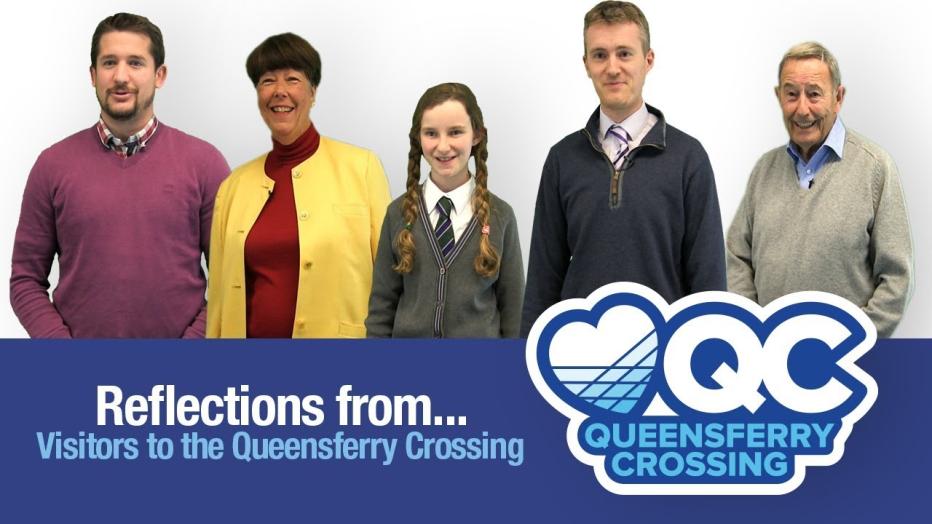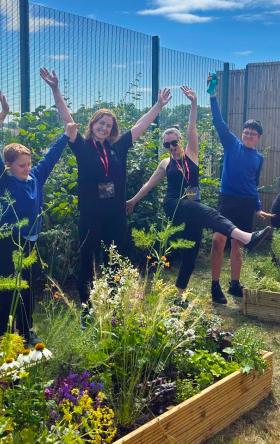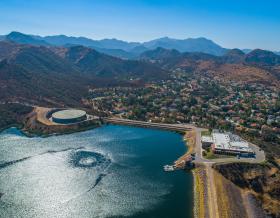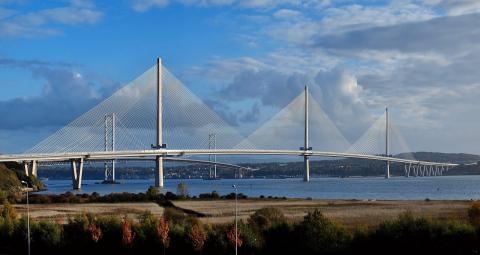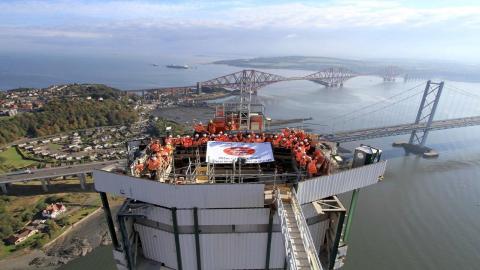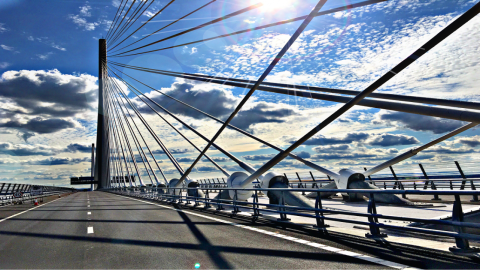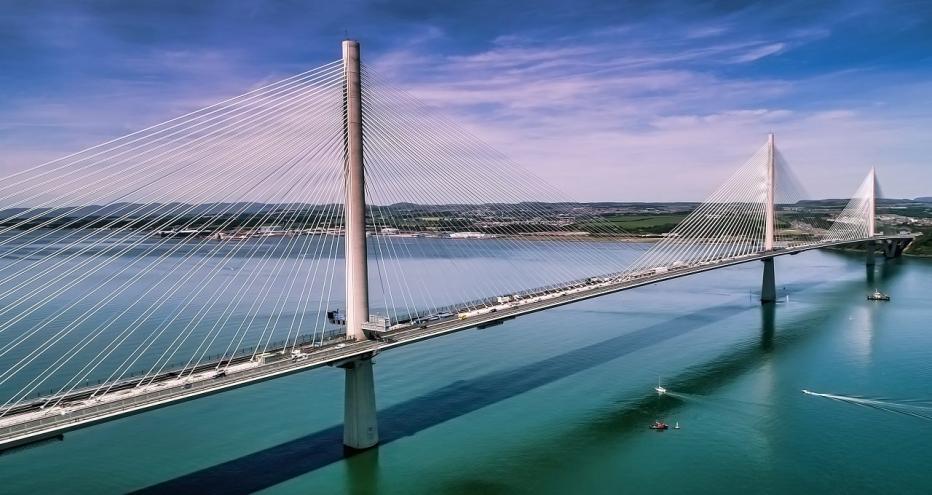
Queensferry Crossing
The stunning and record breaking Queensferry Crossing, the world’s longest three tower cable stayed bridge, forms the centerpiece of Transport Scotland’s major upgrade to the strategic road corridor that connects Edinburgh to Fife and the north of Scotland. 23,000 miles of cabling, almost enough to wrap around the circumference of the Earth, connects the bridge deck to the towers.
Developed to dramatically improve journey reliability, the new and upgraded motorway associated with the Queensferry Crossing encompasses innovative technologies that seek to improve traffic flow, operational safety, air quality and accessibility within region through provision of an Intelligent Transport System. The Queensferry Crossing, encompassing wind shields to provide greater operational reliability, replaces the Forth Road Bridge as the principal road crossing of the Firth of Forth, the old bridge serving as a dedicated public transport corridor for use by buses, taxis, motorcycles, pedestrians and cyclists.
Jacobs, as lead partner in the Jacobs Arup Joint Venture, supported Transport Scotland from the earliest stage of development. Co-locating with the client to form an integrated Employer’s Delivery Team from the outset enabled delivery of the design and assessment process that led to the realization of the “managed crossing scheme”. The team supported the development of the Parliamentary Bill that resulted in the Forth Crossing Act, providing the powers required to construct the project. It also managed procurement of the three main design and build construction contracts, and effective compliance monitoring activities during the construction phase which commenced in 2011 and resulted in the opening of the Queensferry Crossing in 2017.
-
15 days
of concrete pouring 24/7, a world record for continuous underwater pour
-
22 +
occasions to date when Queensferry Crossing wind shielding kept bridge operational
“The Jacobs Arup JV team worked closely on site with our contractors to deliver a high-quality project. I would like to pay tribute to the spirit of collaboration and the endeavor of all of those involved with this hugely successful project.”
We’ve implemented major innovations and technology solutions on the Queensferry Crossing, allowing the structure to carry substantial volumes of traffic while bringing it firmly into the digital age.
At nearly 684-feet-high, Scotland’s Queensferry Crossing is the tallest bridge in the United Kingdom. To put that into perspective, you’d need to stack 48 of London’s double-decker buses on top of one another to reach the same height as the bridge’s towers.
As Transport Scotland’s lead consultant and delivery partner for the project, our Jacobs Arup joint venture team poured more than 1.6 million hours of work into the bridge – which at 1.7-miles-long, is also the longest three-tower, cable-stayed bridge in the world – and the provision of 13.7 miles of major road infrastructure.
Working closely with Transport Scotland and the appointed Contractors, the JV’s strategy made best use of the existing bridge and infrastructure, through implementation of a ‘managed crossing scheme’ that re-utilised the Forth Road Bridge as part of a Public Transport Corridor, new technology and a well planned and executed procurement process. Combined, these initiatives resulted in an overall saving of more than £1 billion on the original construction estimate in 2009 of up to $3 billion (£2.3bn).
The overall scheme incorporated major motorway upgrades to the north and south of the bridge and Intelligent Transport Systems that enable lane control and the first ever deployment of variable mandatory speed limits in Scotland to smooth traffic congestion, manage incidents and provide live traffic information to drivers. Bus hard shoulder running has also been implemented on sections of the motorway to assist public transport movements during peak periods. Wind shields on the Queensferry Crossing provide vehicles with protection from the frequent high winds associated with the Firth of Forth. Use of a structural health monitoring system will provide information on the ongoing condition of the Queensferry Crossing throughout its operational life, to assist condition monitoring and the effective planning and execution of maintenance activities.
The Queensferry Crossing has dramatically improved the reliability of cross-Forth travel – since opening there have been 22 occasions on which the Forth Road Bridge would have closed to high sided vehicles. Closures like this would have meant costly diversions and delays, especially for HGV (heavy goods vehicles) drivers with knock on effects for the economy, businesses and commuters.
Queensferry Crossing in detail
Award-winning success
In 2018, the Queensferry Crossing project won the Outstanding Transport Project in a Generation award at the Scottish Transport Awards. This is not a customary award of the event, but one that was created to highlight the significance of the Queensferry Crossing project.
The Queensferry Crossing project received numerous other accolades, including:
- 2020 Royal Academy of Engineering Major Project Award.
- 2019 GO Infrastructure Project of the Year Award.
- 2019 Royal Institute of Chartered Surveyors (RICS) Scotland Infrastructure Project of the Year.
- 2018 Chartered Institution of Highways & Transportation (CIHT)/Causeway Major Projects Award.
- 2018 Association Québécoise des Transports (AQTr)'s Prix Ambassadeur.
- 2018 Construction News Project of the Year (over £30m) Award.
- 2018 Ground Engineering Awards Project of the Decade.
- 3 CEEAQUAL Excellent Awards.
- 2018 National Transport Awards - Construction and Engineering Project of the Year
- 2018 Ground Engineering Project of the Decade Award – Queensferry Crossing
- 2018 Highways Major Project Award
- 2018 Government Opportunities Excellence in Public Procurement Scotland Awards
- 2018 Saltire Infrastructure Awards ‘Greatest Contribution to Scotland’
Community impact
Sensitive and meaningful engagement and communication with the community and other stakeholders played a critical role on the project. Transport Scotland and the Jacobs Arup JV created and chaired liaison groups that covered marine, environmental, noise, and traffic management activities and involved key stakeholders in the process, enabling feedback on proposals to be sought and support to be garnered.
The project’s Contact and Education Centre provided a focal point for community engagement and education and helped achieve outreach to more than 30,000 pupils across Scotland during construction.
A sustainable connection to a brighter future
